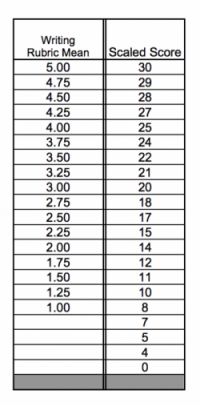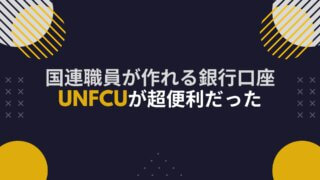前回TOEFL(2020年9月)の9日前に書いた、TOEFL iBT ライティングのエッセイを公開します。海外のTOEFL講座のYoutubeや公式問題集などを参考にして構成しました。これくらいのレベルで28点はとれるんだな、と思って見ていただければ幸いです。
サンプルエッセイは、特に難しい語彙やグラマーは使っていません。また、タイプミスもいくつかありますが、TOEFLにおいては、IELTSよりは大きくスコアに影響しないようです(もちろんないほうが望ましいです!!)。
Task 2についてはこちらから。

TOEFLライティングの採点方法(Task 1&2)
まずTOEFLライティングの採点方法についておさらい。
タスク1(Integrated Task)とタスク2(Independent Task)のエッセイそれぞれに対して、人間とコンピューター(AI)がそれぞれ1~5で評価点をつけ、4つの点数の平均値+標準偏差で算出されるようです。下記は過去にTOEFL公式サイトで公開されていた(らしい)、スコア算出の換算表です。

2020年9月に受けたTOEFLのスコアは28点でした。なので評価店の平均は4.5です。
標準偏差はわかりませんが、おそらく28点の内訳はこんな感じではないかと思います。
| タスク1 | タスク2 | |
| 人間 | 4 | 4 |
| AI | 5 | 5 |
| 4.5 | 4.5 |
人間の採点のほうが「4点」と厳しいと思う理由は、人間の採点で5点を取るためには、
リスニングで述べられる3つそれぞれの主張を裏付ける理由(サブポイント)を、完全にエッセイの中で述べている必要があるからです。
ひとつでもポイントが抜けているなど、内容が不十分だったり、ちょっとした表現や文法のミスがあれば、容赦なく4点以下がつけられます。
詳しい人間の採点基準のお話は、下記の動画が非常に参考になります!!!
Task 1 の基本的な概要(Task 1)
Task 1はIntegrated Taskと呼ばれ、流れは下記のようになります。
- 3分間でリーディングを読む
- 4段落で構成
- 1段落目は筆者の仮説・主張。2~4段落目で、1段落目の仮説・主張を裏付ける理由が3つ述べられている
- リーディングに関するレクチャーのリスニング(2分)を聞く
- 大抵リーディングの内容に反対する内容だが、たまに賛成する内容もある
- 20分間で150 to 225 wordsのエッセイを書く
- リーディングの主張と対比する形でリスニングの内容をサマリーする(問題文:Summarize the points made in the lecture that you heard, explaining how the professor casts doubts on three points made in the reading passage. )、もしくは
- リーディングの主張をサポートする形でリスニングの内容をサマリーする(問題文:Summarize the points made in the lecture, being sure to specifically explain how they support the explanations in the reading passage.)
Task 1 で高得点を取る4つのポイント
高得点を取るために押さえておくべきポイントは、下記の4つかと思います。
1.イントロ、ボディ(3段落)、結論の4~5段落構成で書く
Task 1のエッセイはイントロ(主張)・ボディ(主張の3つの理由と、理由の根拠となるポイント)・(結論)で構成しましょう。
重要なのはボディ(主張を支える理由とポイントの内容)で、結論は有っても無くても得点には影響しないみたいです。
2.リーディングのサマリーはさらっと一文で終わらせ、リスニングの内容をすべて書ききる
これはちゃんと勉強するまで自分ができていなかったところですが、問題文の指示はあくまでも「レクチャーの内容をサマリーしろ」ということなので、リーディングの内容は最低限でいいです。
ボディの各段落(2~4段落目)では、リーディングの主張&理由は1文程度でまとめて、そのあとに リスニングの内容を、レクチャーで述べられていた全てのポイントに触れる形でまとめましょう。リスニングで言っていたことはすべて書く気持ちで大丈夫です。
リスニングの内容の構成は、ポイントの数にもよりますが、理由(1文)・理由をサポートする根拠&ポイントすべて(2~3文)・(余裕があれば)まとめ(1文)、という構成がいいと思います。
3.リーディング・リスニングの内容を言い換えて別の単語で書く
読んだこと、聞いたことをそのまま書くだけだと減点されるようなので、似たような単語や表現で言い換えましょう。また、文章の中でも同じ単語を使いすぎないように、積極的に言い換え表現を多用するといいです。
(なお、スピーキングに関しては、聞こえたことをそのまま言っても結構大丈夫と聞きます。Speakingの点数は低いので、なんとも言えませんが。。。)
4.文字数はなるべく長く書く
これは長ければ何でもいいというわけではなく、きちんと内容の詰まった文章でエッセイを書くと250~300ワード程度になるみたいです。
高得点を狙うための文章構成
これまでの内容をまとめると、文章の全体の構成は下記のようになります。

繰り返しになりますが、ここで最も重要なのは、リスニングで述べらている反論理由の根拠となるポイントをすべて聞き漏らさず、言い換えながら述べることです。
次に、この構成で文章を書くために手助けとなるテンプレートをご紹介します。
高得点のためのテンプレート
テンプレートは一言一句覚える必要はないですが、構成を考えるうえで頭に入れておくとスムーズです。問題文によってはまるっと使うと不自然になるので、臨機応変に使う必要があります。
イントロ(ざっくりとした内容のサマリー)
The article introduces/claims/emphasized/states (トピック). More specifically, the writer discusses (筆者の立場). However, the lecturer in the listening passage thinks (筆者とは別の立場).
3つのポイント
In the reading, the author begins by stating that ( リーディングの立場1). The lecturer, however, cast doubt on the author’s idea because he claims that (根拠や理由). Therefore, s/he thinks the claim of (リーディングの立場1) is not convincing enough.
The reading passage argues that (リーディングの立場2). Again, the lecturer refutes the writer’s argument. The speaker holds that (リスニングの反論2)because(根拠や理由). Hence, s/he thinks (リーディングの立場2に反対する内容)
Another reason why the author feels that (リーディングの主張) is that (リーディングの立場3). The lecturer in the listening passage is doubtful that this is accurate. S/he suggests that (リスニングの反論3)
まとめ(なくてもいい)
To sum up, both the author and lecturer hold conflicting views about (トピック). It is clear that they will have trouble finding common ground on this matter.
TOEFL Writing 28点を取得したサンプルエッセイ1
ここから、ついにエッセイ公開です!稚拙な部分もあり恥ずかしいのですが、あえてそのまま公開します。なお、タイプミスのところは赤字で追記しています。
In the reading passage, it is claimed that the full-length portrait of a teenage girl which has been discovered recently is Jane Austen’s portrait. The lecturer, however, states that it is not convincing that the subject of that portrait is Jane Austen for the following reasons.
First, the reading passage mentions that Austen’s family endorsed the portraint portrait as Austen herself and this is evidence that the subject is Austen herself. The lecturer casts doubt on this point because it has been recognized by her family 70 years after Austen’s death. This means no family members have possibly met Austen in person. Therefore, the lecturer thinks the claim made by Austen’s family is not convincing enough.
Second, the reading passage argues that the discovered portrait looks similar to the sketch of an adult Austen that was made by her sister Cassandra. The lecturer introduces the fact that Austen’s family has a lot of children. Thus, the lecturer thinks the subject of the discovered portrait is one of them, possibly Austen’s distant nephew.
Third, the reading passage presents the idea that the discovered portrait must be made by Ozias Humphrey, considering the fact that the painting was unsigned and undated, which is Humphrey’s style of painting. The lecturer disagrees with this claim because Humphrey had not started to sell his paintings in London when Austen was a teenager. He actually began to sell campus when Austen was 27 years old. From the above reasons, it is impossible for Humphrey to depict the portrait of an teenager Austen.
(合計252 words)
TOEFL Writing 28点を取得したサンプルエッセイ2
The reading passage emphasizes the negative aspects of private ownership of fossils. It is claimed that the sale of fossils to private owners will cause unfavorable results for both scientists and the general public. However, the professor states her opinion in the lecture that the increase of private ownership has a lot of benefits. Therefore, she thinks the advantages outweigh the disadvantages.
First, the reading passage states that the public interest in fossils decreases as people have less opportunities to see fossils at the museums where everyone can go and see them. On the contrary, the lecturer refutes this idea by saying that the privatization of fossils actually increases the public exposure as more fossils are found as the demand by the private collectors increases. As more fossils are available in the world, they can be displayed in public spaces such as schools.
Second, the reading claims that scientists lose access to the fossils and they are likely to miss crucial findings about fossils. The lecturer disagrees with this idea because she thinks all the fossils should pass through scientists first before going to the private owners. Hence, she thinks the scientists do not miss chances to examine the fossils.
Third, the reading passage states that the commercial fossil collectors may possibly destroy the important fossils because they are untrained to handle them. The lecturer says that it is still better to have more fossils to make progress on research even though the scientists do not have full access to all the data that they want to acquire.
For these reasons, The lecturer disagrees with the reading in terms of private owership will deteriorate the research on fossils in general.
(280 words)
最後に
ライティングは付け焼刃で点数があがる分野ではなく、日々の英文作成能力が問われるとつくづく思います。。。。業務でのメールや新聞、論文などを読むときに、いい表現があれば盗んで自分の引き出しにどんどん入れていくことが重要ですね。
次回以降も28点以上をキープできるように、またもっとレベルの高い文章が書けるように、努力していきたいと思います。









コメント